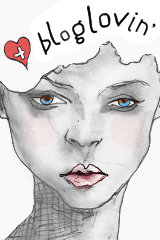Step 1 – Brain storming ideas with those involved. Do this well in advance. Remember that it is your party, and instead of driving everyone crazy or becoming an annoying dogmatic type, get everyone involved. Have a group sit down, and let your creative juices fly. Your theme is what will make your party unique. Settle on the most appropriate theme and proceed.
Step 2 – Deciding on your 6 party elements. Whatever the party, the elements of getting it done are essentially the same. Keep your 6 party elements tied to your theme.
- having a party and planning schedule – let everyone know the how, when, what and when! Fill this in as you discuss your elements. What is to be done before and on the day!
- invitations (include suggested dress code) – getting your message out in style.
- food and drink (including utensils and tableware) – funky cutlery to exquisite dining ware?
- decoration – Christmas bonbons or elegant flower arrangements.
- centre piece display – birthday cake or back wall for speeches.
- games and activities – simple games can be a great way to break the ice or keep children excited.
Step 3 – Allocating duties (and budget), getting it done. There is nothing worse than bogging yourself down. Clear the clutter by allocate duties. Because you have brainstormed and decided on your party elements with others job allocation becomes natural. Everyone will feel a part of the occasion.
Step 4 – Enjoying yourself! The most important part. There is nothing worse than a frazzled host. Following this simple step method, you have what you need, know who is responsible and your guests are enjoying themselves only a little less than you.
Here is an example execution to help you get more ideas for your next party. Joe, my
neighbourhood friend had recently gained his 'Sea & Rescue' qualifications. This had been a life-long ambition and we all wanted to share his joy and excitement with a surprise party...
Step 1 was easy. It did not take long for us to decide on 'Sea & Rescue.'
Step 2, the core of our party, and we decide on our elements:
- Our party schedule was simple. Apart from the invitations everything was to be ready the day before the party, just in case of any hiccups. A set up time, start time, speech time and award presentation.
- 'Rescue Joe' pack invitations. Each contained a white plastic card with an enclosed rescue glow stick. One of Joe's friend's from college came dressed up in a foil blanket and bandages!
- Food and drink we decided on colourful cocktails in plastic beakers, using other glow products to place in the white large plastic drum of our alcoholic cocktail punch. Wrapped finger food in coloured foil to make it like stay fresh food carried in rescue kits.
- We found plenty of decorations to suit our party at the local discount store. White plastic sheeting and yellow plastic ribbon we used to cover our tables and the posts of the decking area. Cheap fishing nets and other floating devices.
- A big white box with a big red cross containing a life vest with a huge 'Congratulations Joe' out of glowing adhesive letters -- placed in the box out of sight of Joe until the award presentation. An impressive centre piece display.
- Our activities were easy, speeches and the awards ceremony.
Step 3. Jobs were given to those who came up with the ideas.
Step 4. I had a great time and Joe was elated.
As you can imagine the party was a huge success. People arriving in all kinds of dress and with only the simplest additions to their normal wear. By deciding on our theme, sticking to it, applying this simple 4 step plan, and working with our party elements, it was just too easy to come up with unique ideas and create an atmosphere of fun and excitement. Get cracking!






.PNG)






The Chemistry of Glow Sticks..
ReplyDeleteThe glow stick contains two chemicals and a suitable fluorescent dye (sensitizer, or fluorophor). The chemicals in the plastic tube are a mixture of the dye and diphenyl oxalate. The chemical inside the glass vial is hydrogen peroxide. By mixing the peroxide with the phenyl oxalate ester, a chemical reaction takes place; the ester is oxidized, yielding two molecules of phenol and one molecule of peroxyacid ester. The peroxyacid decomposes spontaneously to carbon dioxide, releasing energy that excites the dye, which then deexcites by releasing a photon. The wavelength of the photon—the color of the emitted light—depends on the structure of the dye. There are three compounds that are necessary for glow sticks to produce light. The first two, bis(2,4,6-trichlorophenyl)oxalate (TCPO) and hydrogen peroxide, combine to produce a complex which reacts with the third chemical, a dye (generally an anthracene derivative) and the dye emits the light.